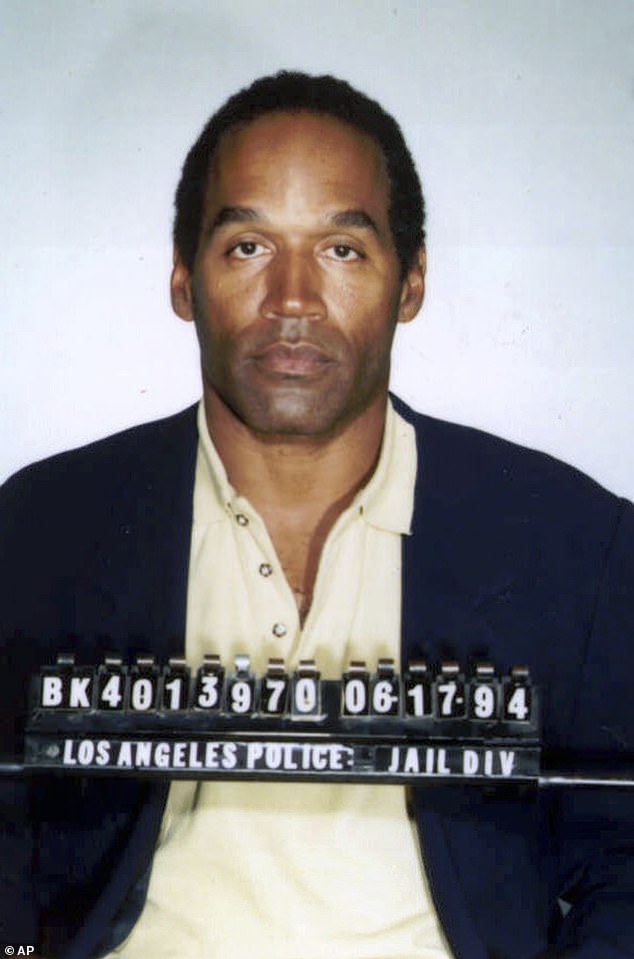Not only is the NFL silent on OJ Simpson’s passing, but his alma mater has also resisted calls to address the scandalized running back’s death this week.
Southern California has a copy of Simpson’s Heisman Trophy in Heritage Hall on campus, and the Trojans continue to retire his jersey in recognition of his two notable seasons in the USC backfield. What’s more, his number 32 appears prominently at every home football match on the posters covering the peristyle stairs of the venerable Colosseum.
But when Simpson’s death from prostate cancer at age 76 was announced Thursday in Las Vegas, his school made no public acknowledgment.
The silence, atypical of the Trojans, who have praised their great football players with florid public statements, is an obvious statement in itself about the complicated relationship with one of the most outstanding athletes in USC history.
Lincoln Riley was born 15 years after Simpson won his Heisman, but the current USC coach had to provide what may prove to be the university’s only notable words on Simpson’s death during his normal spring football media availability .
This booking photo provided by the Los Angeles Police Department shows Simpson in 1994.
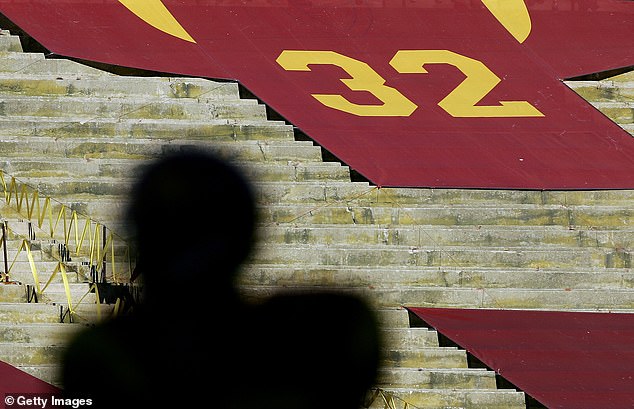
A silhouette of Reggie Bush is seen in front of USC alumnus OJ Simpson’s retired jersey.
“Certainly, as a head coach here, you obviously know his history and his legacy, the type of player he was here,” Riley said. “We definitely, certainly recognize that and obviously extend our condolences to his family for their loss.”
That disconnect has largely been the standard for institutions in Los Angeles and across the country for the past three decades since Simpson was accused of killing his ex-wife and her friend in 1994.
The worlds of sports and entertainment largely disassociated themselves from one of the most famous athletes-turned-actors of his generation, and most of his old friends and admirers had abandoned Simpson by the time he was acquitted in 1995.
So it’s hard to remember that until the public course of Simpson’s life changed forever when he was almost 40, he was widely perceived as an embodiment of the American dream.
He grew up in San Francisco’s Potrero Hill housing projects, overcoming run-ins with gangs, a few arrests and juvenile detention before finding an outlet through football. Simpson then played two seasons at City College of San Francisco, becoming a two-way college star.
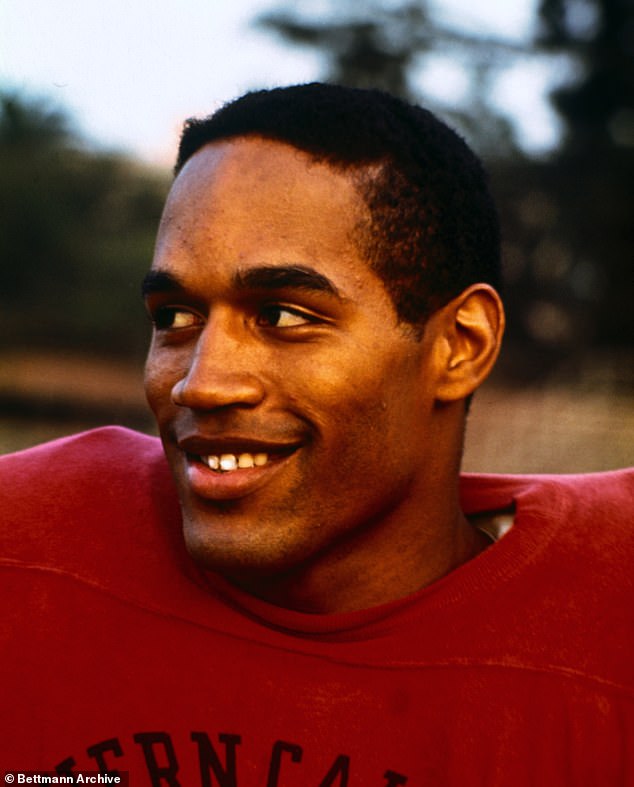
Pictured is a young OJ Simpson during his days at USC, where he ran and played football.
Major programs offered Simpson scholarships for the 1967 season, and he chose USC, the school he admired as a child. He arrived on campus with high expectations under coach John McKay, but he surpassed all reasonable odds by becoming one of the most dominant running backs in college football history.
How important was Simpson to the Trojans while they went 19-2-1 and made two Rose Bowl appearances during his two seasons? He carried the ball 674 times in just 22 games for 3,423 yards and 36 touchdowns.
Simpson remained popular in Los Angeles as he continued his NFL career in Buffalo and San Francisco, and returned to Hollywood to continue his acting career after retiring from football. He was an avid golfer and a member of the famed Riviera Country Club in Pacific Palisades, where he played several times a week in 1994, including the morning before Nicole Brown Simpson and Ronald Goldman were killed.
Simpson was found responsible for the deaths in a civil trial in 1997, and subsequent attempts to rehabilitate his image failed. Simpson’s charming life in Hollywood was over.
The former football star and USC remained publicly estranged for the rest of his life, and an attempt to change that also backfired.
Simpson visited USC’s practice in Fort Lauderdale in late 2002 as the Trojans prepared to face Iowa in the Orange Bowl. The 1968 Heisman winner, who had not been on the team since the murders, spoke with current Heisman winner Carson Palmer and others.
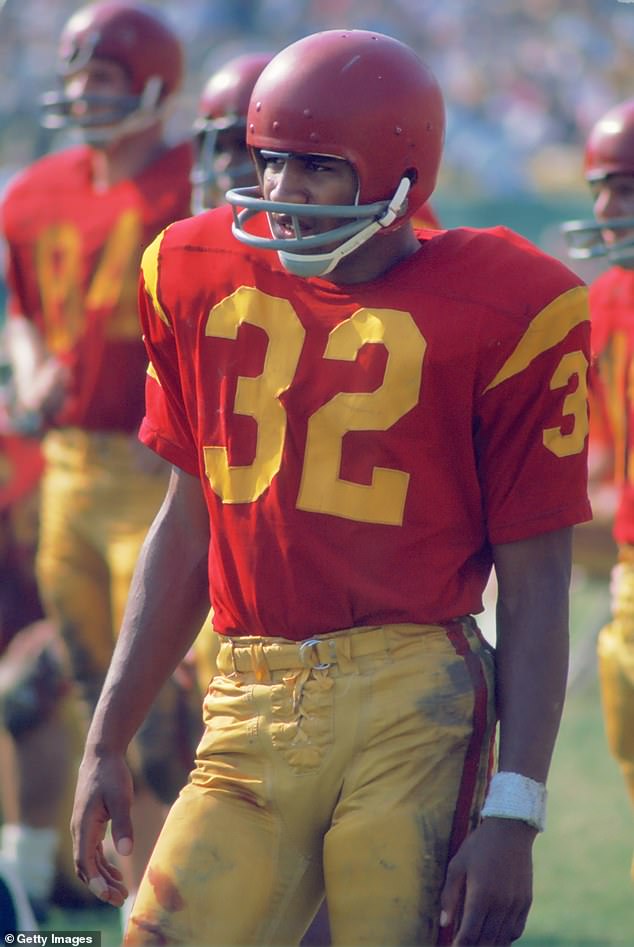
Simpson appears in 1968, a season that ended with the running back winning the Heisman.
Pete Carroll called Simpson “a legend” after welcoming him, but the coach and the school received widespread public condemnation for again associating with Simpson. His connection to USC largely ended from there, especially after his subsequent nine-year incarceration for armed robbery.
Simpson’s death didn’t change how most of his former teammates and friends felt, for better or worse. Many of Simpson’s former USC teammates also died, and others declined to speak publicly about him when asked Thursday.
Three years ago, Simpson told The Athletic that he didn’t like being in Los Angeles because “I could be sitting next to whoever did it.” I really don’t know who did this.’
Simpson was mourned by the official Heisman Trophy
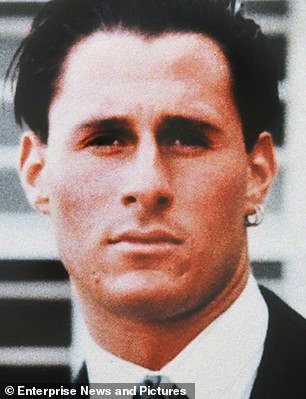
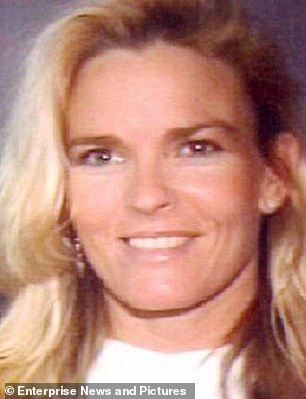
Simpson was acquitted of the murders of Ron Goldman (left) and Nicole Brown (right), but was later found responsible for their deaths in a civil trial in 1996.
Simpson was later found civilly liable for the deaths of his ex-wife Nicole Brown and her friend Ron Goldman.
However, that didn’t stop the official Heisman account from commemorating Simpson, posting a graphic that read: “The Heisman Trophy Trust mourns the passing of 1968 Heisman Trophy winner OJ Simpson.” We extend our deepest condolences to his family.’
That post was not well received by fans, who harshly criticized the graphic.
“No one is mourning except you and your children,” one wrote.
A common response to the Heisman post was also that Reggie Bush, another former USC star, should get his Heisman Trophy back.
Bush won the award in 2005, but voluntarily returned it in 2010 after an NCAA investigation found he accepted impermissible benefits while in school, with heavy sanctions imposed on USC as punishment.

